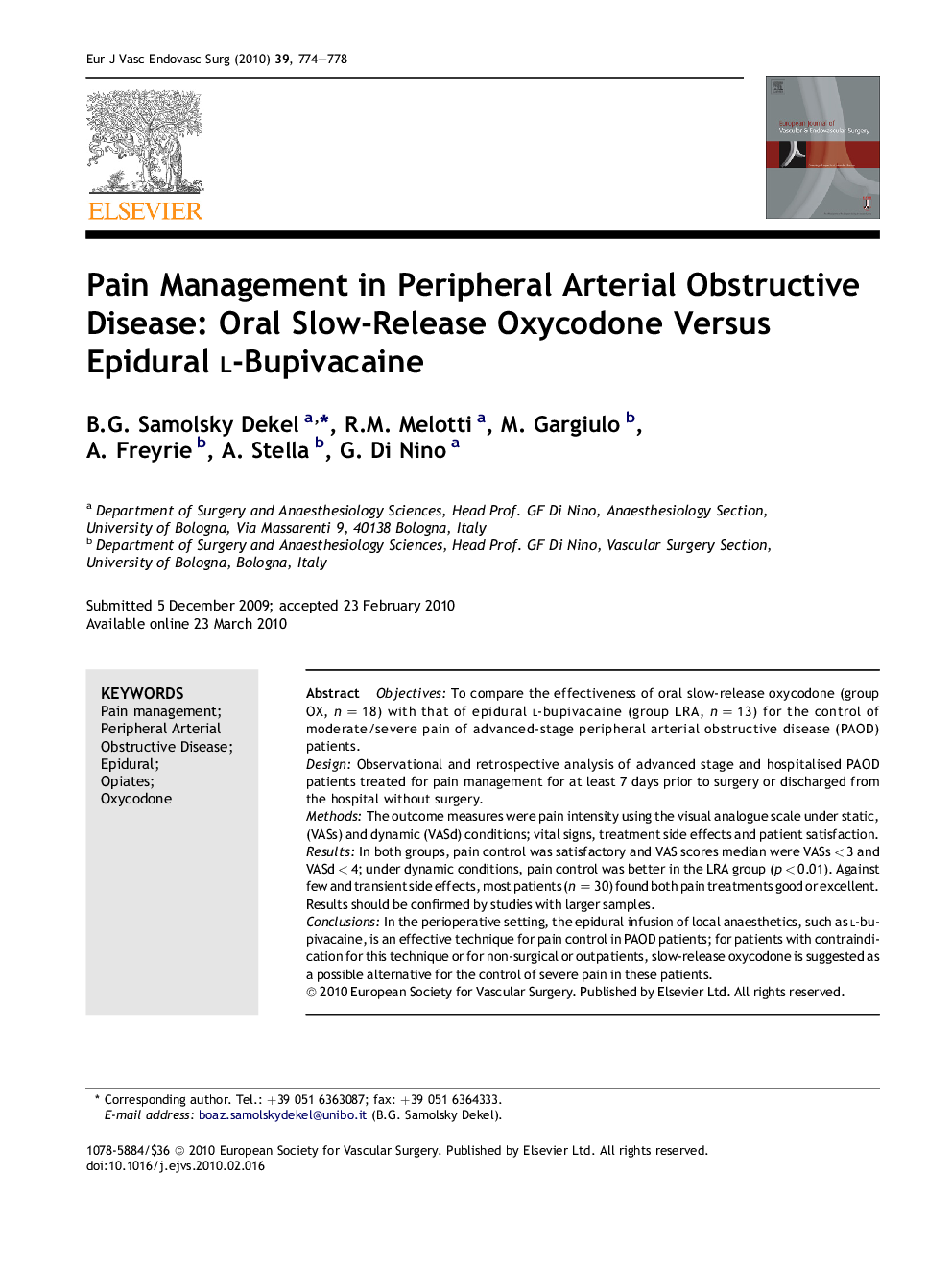| کد مقاله | کد نشریه | سال انتشار | مقاله انگلیسی | نسخه تمام متن |
|---|---|---|---|---|
| 2914300 | 1575504 | 2010 | 5 صفحه PDF | دانلود رایگان |

ObjectivesTo compare the effectiveness of oral slow-release oxycodone (group OX, n = 18) with that of epidural l-bupivacaine (group LRA, n = 13) for the control of moderate/severe pain of advanced-stage peripheral arterial obstructive disease (PAOD) patients.DesignObservational and retrospective analysis of advanced stage and hospitalised PAOD patients treated for pain management for at least 7 days prior to surgery or discharged from the hospital without surgery.MethodsThe outcome measures were pain intensity using the visual analogue scale under static, (VASs) and dynamic (VASd) conditions; vital signs, treatment side effects and patient satisfaction.ResultsIn both groups, pain control was satisfactory and VAS scores median were VASs < 3 and VASd < 4; under dynamic conditions, pain control was better in the LRA group (p < 0.01). Against few and transient side effects, most patients (n = 30) found both pain treatments good or excellent. Results should be confirmed by studies with larger samples.ConclusionsIn the perioperative setting, the epidural infusion of local anaesthetics, such as l-bupivacaine, is an effective technique for pain control in PAOD patients; for patients with contraindication for this technique or for non-surgical or outpatients, slow-release oxycodone is suggested as a possible alternative for the control of severe pain in these patients.
Journal: European Journal of Vascular and Endovascular Surgery - Volume 39, Issue 6, June 2010, Pages 774–778